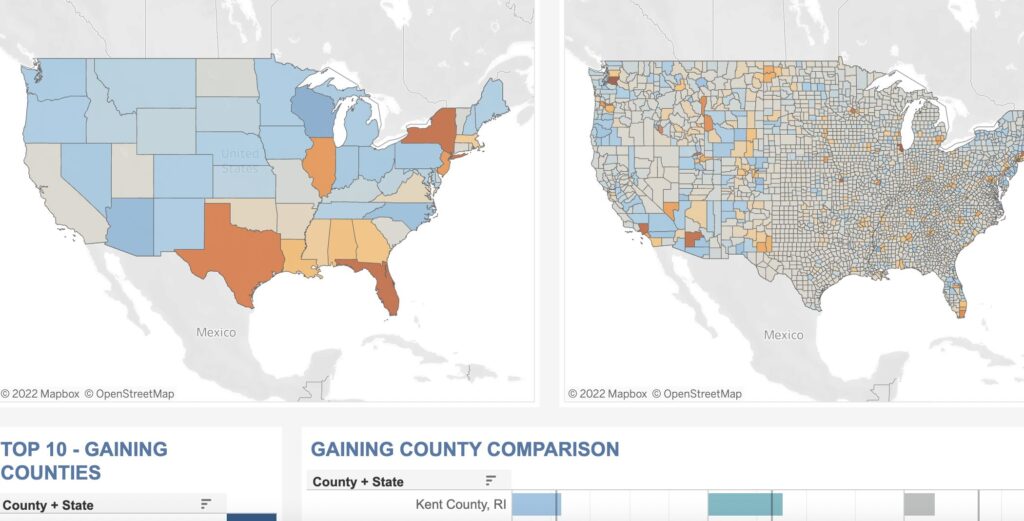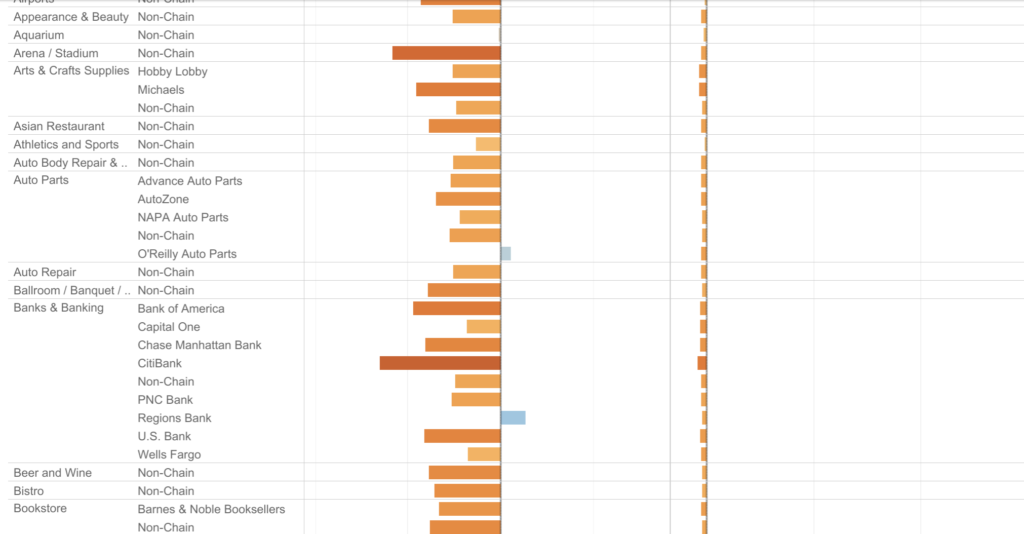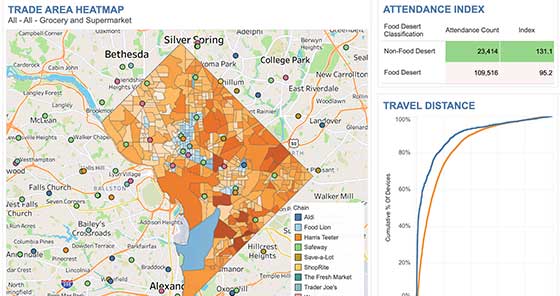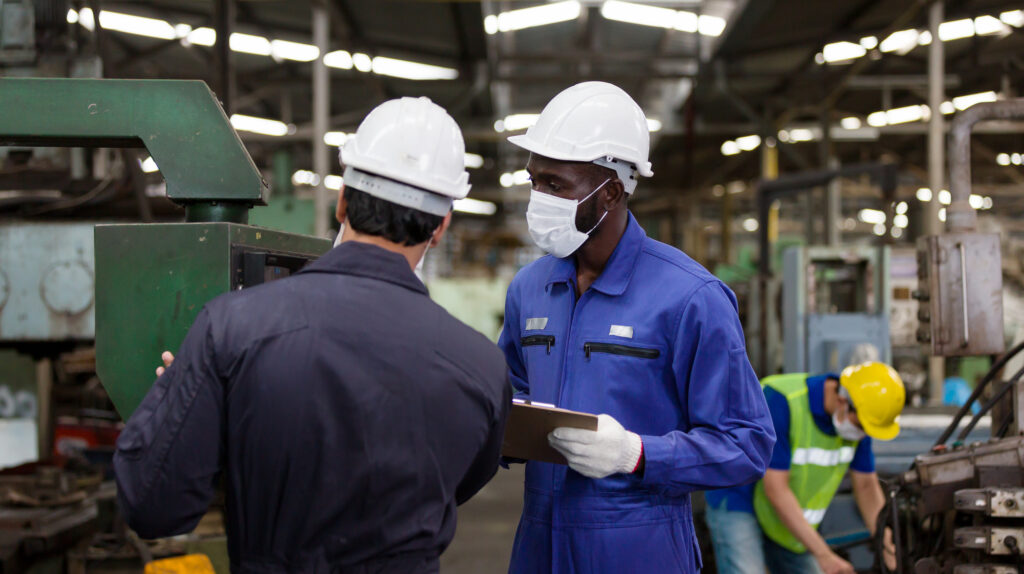The Definitive Guide to Trade Area Analysis
This helpful guide will teach you everything you need to know about using location intelligence for trade area analysis.
Location intelligence is an essential tool for any organization that wants to learn more about the communities it serves.
Updated: September 12, 2023


The Value of Trade Area Analysis
A trade area analysis, also referred to as a catchment area analysis, aids organizations in understanding the size and characteristics of the area that a specific store, service, or other local resource serves. For example, a retail pet store chain has plans to expand and is considering opening a new location in an adjacent town. Before doing so, the chain would like to understand where visitors to its existing area store travel from and how far, on average, they travel to visit this location. Similarly, a local municipality might commission a trade area study to determine where to build its new hospital so that it is readily accessible to the majority of residents in the community. Trade area analysis may also include complementary information about the catchment area, such as demographics, proximity to roads or communities, availability of parking, competitive activity, and more.
Why Perform Catchment Area Analysis
Conducting a trade area analysis is one of the most critical steps that a business can take when deciding to open a new location or expand (or contract) its footprint. A well-executed analysis can help you choose not only the best location for a new business but also inform staffing, inventory, and operating hours. Catchment area analysis is also very helpful for public services, ensuring that transportation, healthcare, and emergency services can meet the needs of the neighborhood.
| Market Research | Site Selection | Resource Planning |
|---|---|---|
| Understand the attributes of an area, including foot traffic patterns, demographics, average income, and the cost of housing. | Choose the best site for your newest location based on foot traffic patterns. Understand human movement by time of day or day of the week. | Use location intelligence to distribute resources equitably across catchment areas. Allocate funding, assets, and staffing accordingly. |
| Transportation Planning | Targeted Advertising | Emergency Preparedness |
|---|---|---|
| Evaluate the coverage and availability of public transportation. Determine optimal schedules and capacity, and pinpoint areas lacking sufficient transportation. | Use the catchment area to determine where to advertise to your target consumers. Advertise in the areas where your visitors are most likely to live and work. | Understand the catchment area for emergency services, like hospitals or fire stations, to plan for resource distribution and coordinate response efforts. |
By taking the time to perform a trade area analysis, businesses in every industry can make smarter, more informed decisions at every stage.
Understand Local Consumer Preferences
There are many factors to consider when deciding on the best location for your business. Store location and accessibility to roads and communities are essential, as are who your customers might be. Many times, the question of who your customers are can only be answered once your business is open and attracting customers. With location intelligence, it’s now possible to understand more about your prospective customers before you commit to building on a site.
With a trade area analysis built on location intelligence, you can gain a sense of who the consumers are that are patronizing the area where you plan to build. This type of analysis can help answer questions like:
- What products or services are they likely to be interested in?
- What brands are they most likely to visit today?
- What types of events are they most likely to attend?
- Are they a good demographic or psychographic fit for my brand?
This type of analysis has all of the characteristics of a detailed market research report, except that the data is limited to the population that is most likely to visit your store or business.
What industries can benefit from trade area, or catchment area, analysis?
Generally speaking, catchment area analysis is beneficial to any business that has one or more physical locations. These may include shopping centers, retail stores, hotels, and other event centers, as well as professional services. Here are a few examples of how a trade area analysis can be used in a variety of industries.

Real Estate: Trade area analysis can be very beneficial to commercial real estate companies and property developers. It can help property managers understand where their visitors are traveling from and when they are most likely to visit. Catchment area analysis can also be used to help identify gaps in offerings, particularly in mixed-use developments, and inform leasing strategies.

Retail: By understanding where their visitors are coming from, retailers can more effectively advertise their offerings to their target consumers. Retailers can also leverage complementary data to understand the buyer personas, interests, and loyalty of their target audience(s). This information can be used to refine its offers and messaging and, ultimately, improve campaign performance.

Hospitality: Businesses in the hospitality industry, including hotels, resorts, and event centers, can use catchment area analysis to understand their various customer bases in depth. For example, an event center may host many different events over the course of a year, ranging from professional sports events to musical theater. The event center may find that the catchment area for one type of event is very different from another and use this information to refine its marketing strategies accordingly.

Banking & Finance: Banks and other financial institutions can use catchment area analysis to understand the coverage of their current locations and to decide where existing coverage is insufficient and a new location may be needed to serve the local population. Conversely, this data can also be used to determine where the market is oversaturated and where an underperforming branch can be closed.

Public Sector: Catchment area analysis can be especially useful for planning public sector services, including healthcare, education, and public transportation. Trade area analysis can help to ensure that services are located in areas that serve the majority of the target population, ensuring more equitable access to critical services in all neighborhoods.
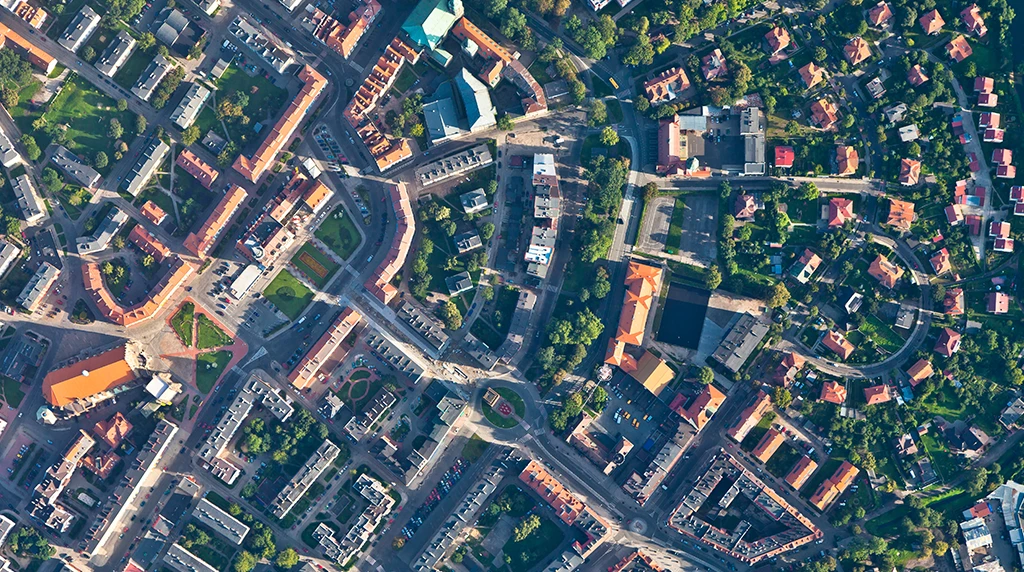
What is the difference between traditional trade area analysis and catchment area analysis using location intelligence?
Traditional trade area analysis is done using estimates based on demographic data, while analysis using location intelligence is based on actual human movement. Using aggregated and anonymized location data generated by mobile devices, it is possible to understand how groups of people move in the physical world and where they are traveling from, taking into account how highways and other spatial attributes in the area affect consumer behavior. For this reason, the best way to determine a trade area today is by using location intelligence. However, traditional catchment area analysis based on demographic estimates remains useful, both as a complement to location intelligence-informed analysis and in as-yet-undeveloped areas where estimates must be used because the local population is expected to grow.
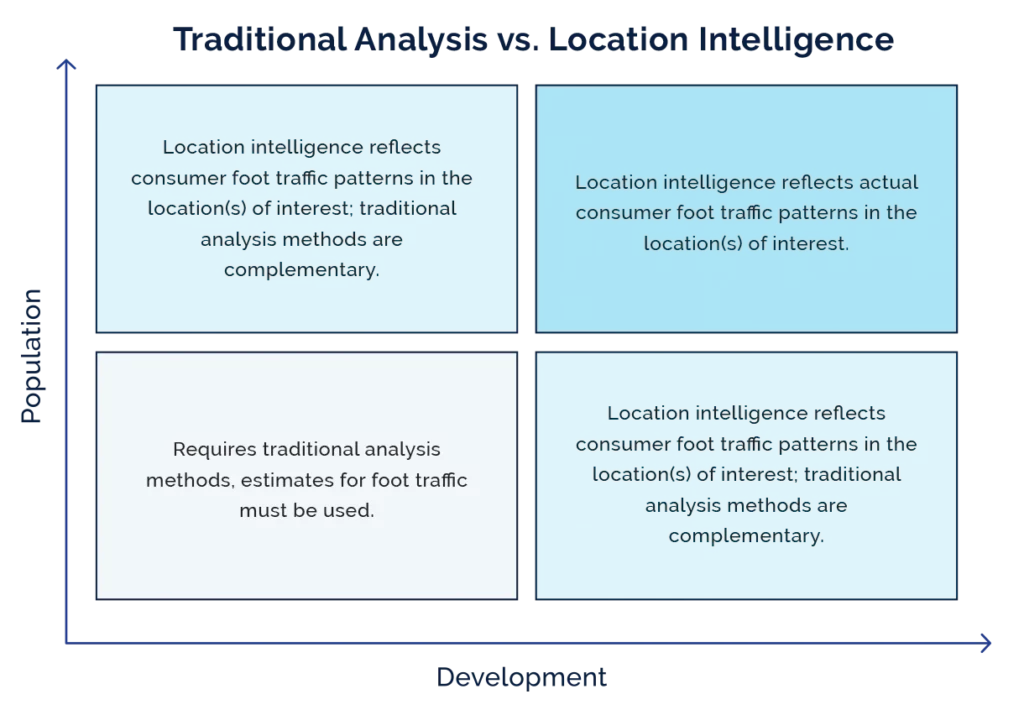
By using location intelligence for trade area analysis, organizations gain a truer understanding of the catchment area that their business serves, rather than an estimate. Roads, bridges, and parking availability can all have an impact on the actual catchment area of a business, making the estimates used in traditional analysis less reliable. Because the underlying location data we work with represents the actual behavior of local consumers, analysis based on location intelligence provides a more complete picture of consumers in the area at the time. The trade area analysis can also be repeated as the neighborhood matures to understand how the area and population have changed over time.
What information can a trade area analysis using location intelligence include?
The type of data included in a trade area analysis can vary, but may include one or more of the following:
Catchment area analysis is an important part of a data-driven marketing strategy. Businesses intuitively understand that it’s important to keep good data about what is happening within the four walls of a brick-and-mortar business, but it’s just as important to understand what is happening in the surrounding area. This includes the consumers in your area as well as both competitive and complementary businesses in the area. By conducting a trade area analysis, you can create a more complete picture of your business environment and use that information to make data-driven decisions for your company.
Location Intelligence Case Studies
See how our customers have used Gravy’s location datasets and analytics to measure consumer activity at places and events of interest.
Nantucket Memorial Airport, Community Data Platforms & Gravy Analytics: Using Location Analytics for Air Service Development
How to Get Started with Trade Area Analysis
There are several different companies that provide software designed for catchment area analysis. These include Maptive, Caliper Corporation, and eSpatial. During your technical evaluation, be sure to ask whether location intelligence is a feature of their system.
If you’d like to speak with a Gravy representative about how you can integrate location intelligence into your own software platform, reach out today.
Visualizations Built on Location Data
The following dashboards use Gravy’s datasets to illustrate population distribution and consumer behavioral trends.
Frequently Asked Questions About Purchasing Location Data
What is included in a trade area analysis?











